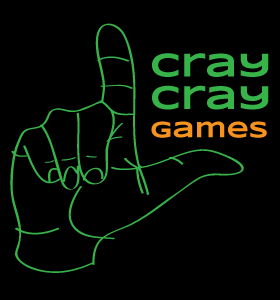Summary:
I… Love… This… Game!
As I have read the rules of many games it seems to me that rules writing is an art that is slowly being lost to mankind. Despite that, this game plays well and is great fun (if you like antagonistic, kill-everyone-else-and-steal-their-treasure games).
The Game’s Objective:
Kill everyone else and…or… steal their treasure. 🙂
Up to 4 players control a wizard that is in a bit of a maze-like series of boards. Each wizard has a similarly-colored board tile (5×5 grid with 1 of 2 different layouts) where a special door (locked for others but open for you) and two treasures rest. You need to travel, by walking or using available portals, to other boards and take treasures and/or “interact” with other wizards.
The first wizard who has two points (any combo of treasures stolen and dropped off in the center of your wizard’s home board and wizard deaths directly caused by your spells) wins.
Setup Comments
The setup and rules, overall, aren’t too bad. Upon encountering the rules at first they may seem daunting and some things could probably be more clearly written but, setup is not long in the default game. There are schools of magic and a wizard can pick one of them so that those spells are included in the game (and available to all wizards). Weeding out the cards takes a little bit of time if you choose to play the default game.
We did that twice and then started playing the just-use-all-of-the-spells variant. That turns setup into 1) shuffle all of the cards, 2) arrange the boards, 3) place wizards and treasures and then go after everyone has been dealt 5 cards (spells).
 .
.
Game Play
Game play is simple. In any order you can move 3 squares and cast spells with a single optional attack. Spells are of different types (counterspell, attack spell, neutral spell) with durations of instant, infinite (creations that must be destroyed) or set-duration (based on how you “power” it). Mixed in with spells are energy cards (numeric cards from 2-6) which can also come from spell cards that have energy values that can be acquired by discarding the spell instead of using it.
While it might seem awkward at first, unless you are an accomplished spellcaster, it becomes very quickly second nature as you move about the board, cast some spells, and wait to respond to any would-be attackers with counterspell cards and such.
There is a bit more to the game, as the devil is always in the details, but it’s manageable. Some examples:
- Your movement and/turn ends as soon as you pick up a treasure.
- You can only pick up one treasure at a time but this does not include items you can carry.
- You can cast as many spells as you like and carry whatever you like as long as your total hand count (cards in play and in your hand) is at most 7 — unless you have a spell or item that is increasing that number.
- You can attack with a spell (or give a weak mage punch for 1 damage) unless you have a spell that increases it (only 2 max attacks in a given round — at least with the cards so far).
- Your weak mage punch can be bolstered if you’re carrying an item like the fire robe (3pt punch)
Problems
I don’t think the game has any major issues. There are some cards that could benefit from some clarification and we’ve discovered two instances that beg that clarification:
- There is a counterspell card that allows you to temporarily erect a wall between you and the caster attacking you that disappears when hit. There was some discussion regarding whether this spell could be cast in response to another wizard’s movement in order to block that movement.
- There was another order-of-operations question that was raised that I will recall shortly and add here.
Additional Analysis
A game with as many spell cards as this has is going to have some questions that get raised that will require some clarification and/or house ruling. Despite the above problems, the game is very playable and great fun.
Ultimately my rating for this game is (shocker): Awesome
UPDATE (7/26/2012)
I’ve played this game approximately 10-15 times now and STILL LOVE IT!!
My Rating Scale
- Awesome: It’s fun, playable, has great art and few, if any, minor issues
- Playable (As Is): Fun, playable with decent art/mechanics with minor issues and at most 1 easily remedied major issues.
- Playable (with Fixes): Potential for fun, but flawed; the game requires fixing before playing again.
- OK: Not great fun, but it kills time. It might even be playable but most would ask why.
- Seriously Flawed: The game is so flawed I am beside myself with how it got published at all. It is also nigh impossible to fix (or just requires way too much to fix, including the creation and printing of new cards/mechanics).
 .
.